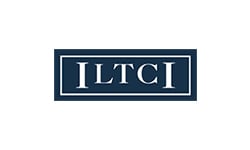Annuities can be an important part of long-term care planning, Tom Riekse, ChFC, CLU, CEBS, Managing Director at LTCi Partners, told attendees of NAIFA’s Limited and Extended Care Planning Center webinar. “Unfortunately, there has probably not been as much emphasis on how they can work together in a plan for care as there should be based on some of the great benefits available.”
There are different ways to fund long-term care, and all have pros and cons. They include traditional long-term care insurance, asset-based hybrid that combine life and long-term care insurance, life insurance with an accelerated death benefit, and self-funded long-term care.
The correct approach varies depending on the individuals involved. One possible solution that is often overlooked is fixed or indexed annuity products with long-term care options. These generally require limited or no medical underwriting and can carry tax advantages by turning tax-deferred growth into tax-free LTC payments.
The Annuity Marketplace
In 2017, there was more than $2 trillion in retirement annuity products. Annuity sales for that year amounted to $95.6 billion for variable annuities and $108 billion for fixed annuities. The average annuity purchaser is 51 years old.
“So there’s a huge market of people who have existing annuities,” Riekse said. “There should probably be a lot more people who are looking at annuities, in general.”
A Gallup poll found that 73% of nonqualified annuity owners see their annuities as emergency funds in the event of catastrophic illness or the need for nursing home care. “That’s a huge percentage of people who really look at these as a safe place in case they need the money,” he added.
An Annuity-Based LTC Plan
HIPPA sets benefit triggers that allow annuity owners to receive LTC benefits tax free. The long-term care event must be expected to last at least 90 days. The event must prevent the care recipient from preforming two of a list of six activities deemed necessary for daily living or result in cognitive impairment that requires supervision. These are similar to the triggers for LTC coverage for LTC insurance or life insurance riders.
An annuity-based LTC plan moves a small portion of retirement planning assets into an annuity LTC product. A rider on the annuity can increase LCT coverage.
The Pension Protection Act allows owners of nonqualified deferred annuities to convert them to annuity/LTC products that allow annuity gains, which are typically taxable, to be accessed on a non-taxable basis for LTC expenses.
Case Study One
An 81-year-old with an existing $125,000 nonqualified annuity or cash fund has a potential need for care, but may not qualify for traditional LTC insurance and does not want to pay ongoing premiums.
An annuity/LTC product offers an initial 36-month base LTC benefit of the annuity value, tax free. The product offers cash value growth. The product itself requires no underwriting. A rider that offers an additional 36 months of care or lifetime LTC benefit dies require underwriting via a tele-interview. This rider also offers flexibility. Payment plans can involve a single payment, 10 payments, 20 payments, or continuous payments. It has optional inflation protection.
With the $125,000 existing annuity, $102,500 would go into a base annuity and $22,500 would go into the rider to pay for a lifetime of LTC coverage. The annuity owner will be able to access up to $36,000 per year to pay LTC expenses, tax-free, for life. The tradeoff is that the new annuity will probably have a lower interest rate and will have a lower cash-surrender value.
Case Study Two
A retire married couple who are 60 years old have a sizeable IRA and a high pension income. They want an annuity plan with guaranteed premiums and don’t want to use money from outside their qualified plan. When the time comes for them to take their RMDs, they will have more money than they need.
They can transfer $200,000 from their IRA to buy a single-premium $240,000 (20% bonus) annuity. The annuity will in turn allow them to purchase a 10-pay (payments of 24,000 each) whole-life policy that has a $239,497 death benefit/LTC benefit and a lifetime rider for LTC insurance as well. The rider provides each of the owners an $86,220 LTC benefit for life.
This case study requires the clients to be 59 ½ years old to use qualified plans with out penalties.
“They have transferred a portion of their qualified money to pay for this plan that will cover both of them for life,” Riekse said. “So I think it’s a great approach.”
















-CMYK.png?width=250&name=LifeSecureLogo(F)-CMYK.png)



.png?width=860&height=245&name=Full%20Color%20Krause%20Group%20Horizontal%20(002).png)


